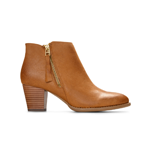
The Science Behind Your Walking Gait: How It Affects Your Body & Well-Being
 Next time you take a walk, whether it’s a stroll around the neighborhood, a vigorous
power walk, or a lap around the kitchen, try this: Instead of focusing on your surroundings, turn your
attention to your body. How does it move? How do your legs step? What are your feet doing?
Next time you take a walk, whether it’s a stroll around the neighborhood, a vigorous
power walk, or a lap around the kitchen, try this: Instead of focusing on your surroundings, turn your
attention to your body. How does it move? How do your legs step? What are your feet doing?
What you’re observing is your walking gait.
Walking is more than just putting one foot in front of the other. Your gait affects your entire body and physical health. In this guide, we’ll explore how gait training, optimizing your walking gait, and finding comfortable shoes can enhance your well-being.
What is a Walking Gait and Why Does it Matter?
Your walking “gait” simply means the way you walk. Everyone’s style of walking is unique and can be determined by a variety of factors such as:
- Physical build
- Age
- Injuries
- Medical conditions
- Sociocultural factors
- Personality
In some ways, your gait is like your wardrobe or your haircut: it’s just another way to show off your uniqueness to the world.
But on the other hand, consider that your gait can also impact your body.
Since so many factors can affect and change your walking gait, understanding how you walk and the science behind your walking gait may be the key to reducing stress, preventing pain or injury, and improving your efficiency as you move through the world.
Understanding the Mechanics of Your Walking Gait
Performing a gait analysis can be used to understand why you may be experiencing joint, leg, or foot pain. For example, your unique gait pattern may show muscle imbalances around the joints for using smaller, stabilizing muscles rather than the use of larger muscles.
When walking, it’s helpful to think of your feet moving through a cycle of two phases: the “stance” phase and the “swing” phase.
- Stance phase – The stance phase is about 60% of the walking cycle and occurs when one foot is on the ground. When you’re walking, both feet will be on the ground for the duration of this phase.
- Swing phase – The swing phase is when one foot is in the air while the other foot remains on the ground. This makes up the remaining 40% of the walking cycle.
Your feet undergo a series of sub-phases within the stance and swing phases. These 8 phases are:
- Initial contact
- Loading response
- Midstance
- Terminal stance
- Pre-swing
- Initial swing
- Mid-swing
- Terminal swing
This may seem like a lot happening in seconds, so let’s break these down further.
Stance Phases
The first four sub-phases of the gait cycle make up the stance phase:
Initial Contact
Initial contact, or heel strike, occurs when one foot makes contact with the ground and continues until your foot is fully on the ground. The heel strike marks the beginning and end of the gait cycle.
Loading Response
The loading phase may also be called the “early flatfoot” or foot flat stage. In this phase, your knee flexes slightly as your whole foot flattens against the ground, acting as a shock absorber to cushion and redistribute the force against your feet as you walk.
Midstance
The midstance phase is the first sub-phase of single limb support, meaning the leg on the ground supports your body while the other leg is in the air. During this phase, your shin rotates over your supporting foot, a force that propels you forward.
Terminal Stance
Also known as heel-off, the terminal stance occurs when your heel lifts from the ground as you roll onto the ball of your foot. This movement propels the body forward and leads us to the swing phases.
Stance Phases
The remainder of the walking gait cycle can break into 4 sub-phases:
Pre-swing
The pre-swing is a transition period between the stance phases in which your foot begins to lift off the ground.
Initial Swing
Also known as toe-off, this phase marks the moment your toes leave the ground and your leg prepares to swing forward.
Mid-swing
This is the highest point of your step, the moment your leg swings under your body and passes your weight-bearing leg.
Terminal Swing
During this final phase, the leg swings back down, angling your calf, ankle, and foot to take another step. This phase ends when the heel contacts the ground, and the cycle begins again.
The Impact of Walking Gait on Your Body
Your walking gait doesn’t just concern your legs and feet, but your entire body as one unit. How your body moves affects your stability, flexibility, mobility, and strength. When your walking pattern changes, it may become an abnormal gait.
An abnormal walking gait may appear as:
- Limping
- Short steps
- Shuffling your feet
- Feeling off-balance
- Dragging your toes
- Difficulty supporting your body
Since your walking gait is more than just your legs, it can have a massive effect on your body. An improper or abnormal walking gait can cause strain on the muscles and joints, leading to a greater risk of experiencing pain or injury.
Common Problems Associated with a Walking Gait
As we see from the many phases and subphases of a walking gait, a lot happens when you take a single step. As a result, an unsteady gait can have a large ripple effect—issues you might experience with your body might be related to your gait without even realizing it.
Some common problems associated with walking gait include:
- Arthritis (of the spine, hip, foot, or leg joints)
- Foot problems (such as ingrown toenails, calluses, warts, swelling, or bunions)
- Injuries
- Shin splints
- Inner ear problems
- Vision problems
- Parkinson’s Disease
Common Gait Abnormalities
Often, when a person experiences concerns in the body that stem from a walking gait, it’s because their gait is in some way abnormal.
There are many types of gait abnormalities, but here are a few of the most common ones:
- Antalgic gait – The most common abnormal walking gait, antalgic gaits (also known as a limp), is typically the result of pain in the legs or lower body. You may avoid putting pressure on a painful leg or foot, resulting in a limp.
- Propulsive gait – This shuffling gait is characterized by a stiff posture with the head and neck bent forward. Your footsteps may be short and quick to maintain a center of gravity. A propulsive gait is common for people living with Parkinson’s disease.
- Waddling gait – A waddling gait exaggerates your upper-body movements, resulting in a walk that exaggerates side-to-side movement. This type of gait may develop early in life due to a hip dislocation present from birth or muscular dystrophy.
- Spastic gait – This gait is caused by a muscle contraction on one side that results in walking with one stiff leg. When that leg lifts to walk, your foot drags or swings in a semicircular motion called circumduction.
- Scissor gait – Often considered a more severe form of spastic gait, the scissor gait happens when your legs hit or cross in a scissor-like pattern as you walk. With this gait, your hips and knees may bend in a crouch, and your footsteps may be slow.
Gait abnormalities are more common with age. About 15% of people experience a gait abnormality by age 60, and over 80% develop a gait abnormality by 85.
The Link Between Your Walking Gait and Your Well-Being
It isn’t always possible to correct an abnormal gait. But if you have the opportunity and are physically able to do so, working toward an improved gait can make it easier and more comfortable to move your body day to day. And as it turns out, simply increasing your walking speed (no need for power walking per se) or walking more can carry a host of potential health benefits.
Paying attention to, and optimizing, your walking gait can:
- Reduce pain while walking – Improving your walking gait can reduce excess stress on your joints and muscles, which may help soothe aches and pains in your back, hips, legs, and neck that come about from poor posture.
- Support heart health – Among the many benefits of walking, one of the most impactful is its ability to support cardiovascular health, lower blood pressure, and even help regulate cholesterol levels.
- Build muscle and joint strength – Gait abnormalities can lead to muscle weakness. Optimizing your walking gait can help fortify your lower body by exercising the muscles in your legs and joints.
- Improve balance and posture – Abnormal gaits increase the likelihood of injuries due to falling, as abnormal gaits are often off-balance. Optimizing your walking gait can help prevent this by building core strength to improve your balance and posture.
Tips for Improving Your Walking Gait
Improving your walking gait can’t happen overnight, but there are ways to help your transition a little bit easier. Here are a few helpful tips to achieve an optimal gait when walking:
- Always be conscious of your posture. Many of us sit hunched over at a computer, so remember to straighten out your back and relax your shoulders to help release upper-body tension.
- Land on your feet lightly with a heel-to-toe motion. A fluid, gentle stride may help reduce your risk of injury.
- Your shoes make a difference. Wear footwear designed for walking or running to best support your feet and joints as you move. When choosing your shoes, consider your calf circumference.
- If your gait abnormality is more severe, seek physical therapy to help you optimize your walking gait and find the movement that’s right for you.
The Role of Footwear in Supporting Your Walking Gait
Your footwear can absolutely play a role in your walking gait. The wrong shoe can cause blisters and bunions that can cause you to walk differently than you normally would. On the other hand, proper walking sneakers lend proper balance and support to your feet and let your natural gait come to the forefront.
For corrective arch support and superior stability, try the Walk Max Lace Up Sneaker to enhance your walking motion. If your goal is to perfect your heel-to-toe motion, the Walker Sneakers is the shoe for you.
For extra cushioning and arch support, turn to the Walk Strider Sneaker. This shoe utilizes anti-roll and lateral rigidity technology to keep your gait balanced and reduce the risk of ankle rolling and other injuries. You can also use special orthotic insoles for better comfort.
Don’t Gatekeep Your Best Gait. Choose Vionic.
Your walking gait has a massive impact on your body, so don’t take it for granted—notice it. Prioritizing your walking gait can help alleviate aches and pains in the joints, build muscle strength, and improve your balance and posture.
Your best gait yet starts with the best pair of supportive walking shoes and recovery shoes. And for those, there’s Vionic.
Take your first steps toward true foot comfort in Vionic shoes. Combining fashion and science, Vionic utilizes bio-mechanically engineered footbeds to provide long-lasting, supportive comfort for every kind of motion. Try on a pair today and feel the difference.
Sources:
Cleveland Clinic. Gait Disorders and Abnormalities. https://my.clevelandclinic.org/health/diseases/21092-gait-disorders
footEducation. Biomechanics of Gait and Foot Pain when Walking. https://footeducation.com/biomechanics-of-walking-gait-and-foot-pain-when-walking/
Harvard Health Publishing. Perfecting your walking technique. https://www.health.harvard.edu/staying-healthy/perfecting-your-walking-technique
Mount Sinai. Walking abnormalities. https://www.mountsinai.org/health-library/symptoms/walking-abnormalities
ProtoKinetics. Understanding Phases of the Gait Cycle. https://protokinetics.com/understanding-phases-of-the-gait-cycle/









